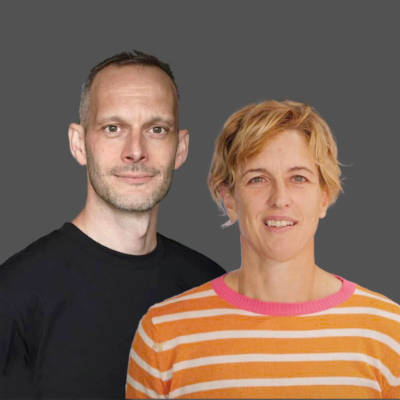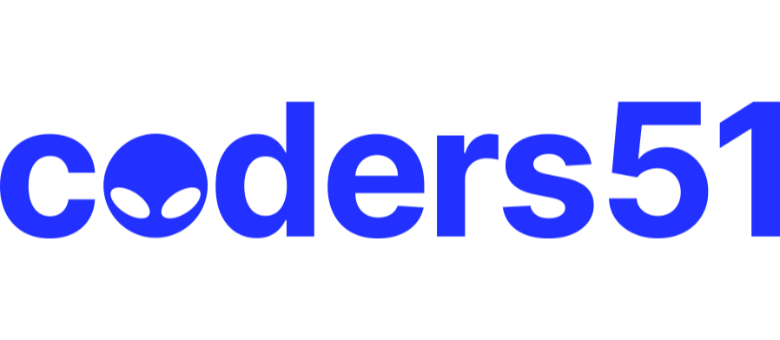Margaret
Spotlight: Sandy Mamoli and David Mole (Authors) Interview and AMA!
Creating Great Teams
with Sandy Mamoli @sandymamoli and David Mole
What if teams could form themselves, rather than being assigned by management? That’s exactly what Sandy Mamoli and David Mole propose in Creating Great Teams: How Self-Selection Lets People Excel, now in its second edition.
With years of experience coaching organizations, Sandy and David have developed a practical method for empowering teams to choose who they work with—and there’s evidence that it leads to stronger, happier, and higher-performing teams.
We sat down with Sandy and David to talk about how self-selection works, why it creates better teams, and how any organization can adopt this approach.
INTERVIEW
Watch the complete interview here:
WIN!
We’re giving away one of Sandy and David’s ebooks to one lucky winner! Simply post a comment or a question in their Ask Me Anything (AMA) below, and the Devtalk bot will randomly pick a winner at a time of the authors’ choosing . . . then automatically update this thread with the results!
Interview Highlights
On self-selection…
“What we’ve discovered along the way is our role, if nothing else, is a lot easier as a coach when people have chosen their own team,” David says.
Sandy adds, “Creating high-performance teams—it is an absolute boost if people work on what they want to work on and who they want to work with.”
On where it all started…
The first self-selection experiment happened while they were coaching at New Zealand’s largest e-commerce company. “We were in the process of creating teams… we had a ship it day…I realized what people were doing…choose their own team and choose their own work,” Sandy recalls. “I got home, and I started blogging about the experience.”
David remembers being open to trying something different after frustrating rounds of management-driven team assignments: “You have to be confused to learn something. You have to be frustrated to try something a bit different.”
On how self-selection works…
It’s not just pick your friends, David explains. “We came up with a method and a facilitated structure where you can actually do this in a really nice way that people enjoy.”
Sandy elaborates: “You have agency. You are in charge. You put yourself where you want to be. No one is picking you.”
When teams are oversubscribed, it’s not about popularity but about conversations. We ask "people to have conversations and figure out together which combination will work for each team to reach their purpose,” Sandy says.
On treating people like adults…
“If we treat people like responsible adults, they will act like responsible adults,” Sandy emphasizes.
David adds, “When you pitch this well… the way people show up has just blown me and Sandy away every single time.”
On ownership and complaint reduction…
“One of the things we’ve observed is a reduction in whinging,” David says. When people have been involved in the choice, they feel ownership of that decision.
Sandy notes, “As a manager, at least you don’t have all these people coming to you whinging about they don’t want to be on this team—because they’ve done it to themselves!”
On recruiting and retention..
“We have watched people stay longer, and we have seen it in the recruitment process where people actively joined a company because they have heard they could get to pick their own team,” Sandy shares.
On self-selection in remote environments…
“The method translates really, really nicely,” David explains. “In fact, it translates so nicely to doing this remotely, I’m not sure which one I would pick if I were given the option tomorrow.”
On progress over perfection…
“We know we’re not going to get perfection, but we also know management selection won’t give us perfection. If we have an imperfect result, I would much rather have trusted adults who are responsible and who have agency and ask them to solve that problem together,” says Sandy.
Now that you know their story, add Sandy and David’s book to your library today! Don’t forget to use coupon code devtalk.com to save 35 percent on the ebook:
Creating Great Teams (Second Edition)
book-creating-great-teams-second-edition
Follow the authors:
Sandy Mamoli
- Website: nomad8.com
- LinkedIn: sandymamoli
David Mole
- Website: nomad8.com
- LinkedIn: davidmole
YOUR TURN!
We’re now opening up the thread for your questions! Ask Sandy and David anything! Please keep it clean, and don’t forget that by participating you automatically enter the competition to win one of their ebooks!
Most Liked
AstonJ
Another great Spotlight ![]()
I completely agree with what you mentioned in the first few minutes - that people work best when they work on what they want to work on and with who they want to work with. I know some large companies actually cycle their staff members to work in recruitment and training as they feel the best people to select prospective employees are those who are going to be working with them.
When it comes to people seeking advice on getting work I usually mention that essentially people hire people, so if you’re looking for a job it’s always worth asking yourself “would you want to work with you?” ![]()
sandymamoli
Hi there,
Glad you enjoyed the video and thanks for the thoughtful questions!
1. Is self-selection only for big companies with lots of teams? What about small companies or situations with fewer people?
Great question, this comes up a lot! While self-selection is often used in larger companies (just because that’s where the “traditional” problems with team formation show up most dramatically), it absolutely works for smaller companies and teams too. In fact, some of the most satisfying results have come from smaller groups, where the entire “company” is selecting into just a few teams, or even forming their first ever teams.
The book shares a story about running a trial with only 20 people and forming three teams, it was a controlled, small-scale environment, and it worked incredibly well. What matters isn’t the size, but the willingness to trust people to make good decisions for themselves and the company. Even in tiny orgs, the benefits, ownership, clarity, better fit, still show up, just on a smaller scale.
2. Has self-selection ever “imploded” or gone wrong? What happens if someone chooses a team and it’s a bad fit?
Honestly, our biggest fear when we started was exactly this, would there be chaos, drama, or people regretting their choices? In practice, total implosions are rare. When things do go a bit sideways (e.g., someone realises they’re in the wrong team, or the fit isn’t great), it’s usually visible early. We encourage teams and individuals to talk openly, often people self-correct or swap teams as needed. Also, self-selection is not a one-time thing. Most orgs run events regularly (every 6, 12 months), so no one is “stuck” forever.
If someone truly hates their new setup, we work together to solve it, sometimes that means changing teams outside the normal cycle, sometimes it means supporting them to make it work until the next self-selection event. But overall, because people have agency, you see fewer mismatches than in top down team assignment.
3. What about the “unwanted” members, or people who can’t find a team?
This is a really common worry. The truth is, it almost never happens that someone is left out completely. People worry about the “last picked for sports” feeling, but in self-selection, everyone chooses for themselves, no one is picked by a team. If someone is struggling to find a fit, facilitators and the group support them to find a place. Sometimes it shines a light on bigger issues (like skills mismatches or interpersonal problems) that would’ve come up anyway, at least now it’s in the open and can be worked on.
And for full teams, if your dream team is full, you talk it through. Sometimes teams shuffle members to fit everyone’s needs, sometimes it takes a bit of creative problem solving. The process is deliberately open and human, with plenty of support built in. And if someone is truly, repeatedly left out, that’s usually a sign of deeper cultural or performance issues, which self-selection helps bring to the surface, so it can be addressed.
4. Have you thought about self-selection for individuals in job search or career planning?
Love this question! While the book is focused on teams within organisations, a lot of the principles, ownership, clarity on what you want, thinking about who you want to work with, absolutely apply to career planning too. It’s a fascinating idea and very much aligned with the spirit of our work.
Happy to discuss further!
Sandy
alvinkatojr
Hello again,
Thanks for the detailed responses to my questions. I have a couple more thoughts and 2 more questions, so here goes.
I like this answer. It ties in again with something you mentioned there about giving people agency.
On this statement, don’t you think 6-12 months is long time frame. I get the need team stability and the likes, but if I was to run this I’d be thinking of doing this every quarter. Not forcefully though, but for the teams and people that want to change. Do you think that’s too soon?
This reminds me of the parable of letting the wheat and the weeds grow together so that they can be identified during harvest time with wheat the heading off straight to the barn and weeds ending up in the fire ![]() .
.
Yep, self-selection really is the weed master, ultimate workplace “pest-control” ![]()
I like this. Thinking about it in this way, does make me look at your book from another angle. On the flip side, since this thought process aligns with the spirit of your work, maybe you have just received inspiration for your next book idea?
Thanks again for the responses, Sandy!
Alvin
Popular Community topics

Other popular topics

Latest in Creating Great Teams
Latest in Creating Great Teams, Second Edition
Categories:
Sub Categories:
Popular Portals
- /elixir
- /rust
- /ruby
- /wasm
- /erlang
- /phoenix
- /keyboards
- /python
- /js
- /rails
- /security
- /go
- /swift
- /vim
- /clojure
- /java
- /haskell
- /emacs
- /svelte
- /onivim
- /typescript
- /kotlin
- /c-plus-plus
- /crystal
- /tailwind
- /react
- /gleam
- /ocaml
- /flutter
- /elm
- /vscode
- /ash
- /html
- /opensuse
- /zig
- /centos
- /deepseek
- /php
- /scala
- /lisp
- /react-native
- /sublime-text
- /textmate
- /nixos
- /debian
- /agda
- /django
- /kubuntu
- /deno
- /arch-linux
- /nodejs
- /ubuntu
- /revery
- /spring
- /manjaro
- /diversity
- /lua
- /markdown
- /julia
- /slackware











